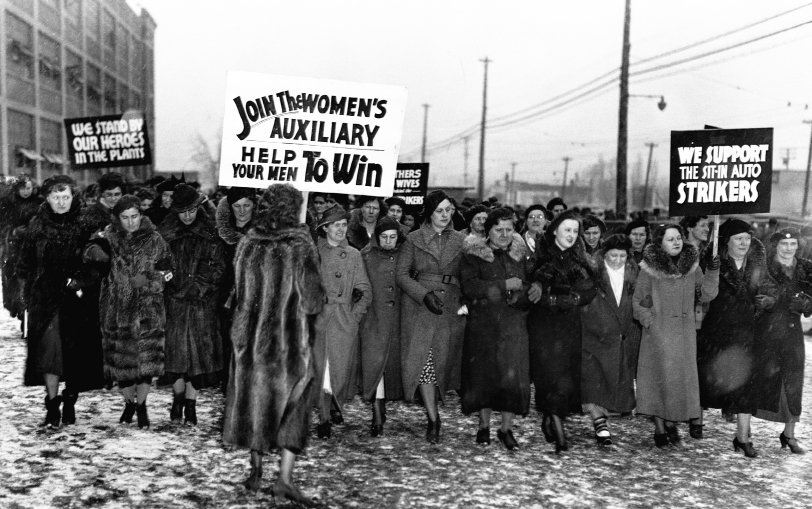Exploring American Histories: Printed Page 704
Exploring American Histories, Value Edition: Printed Page 583
Organized Labor Strikes Back
In 1935 Congress passed the National Labor Relations Act, also known as the Wagner Act for its leading sponsor, Senator Robert F. Wagner Sr. of New York. The law created the National Labor Relations Board (NLRB), which protected workers’ right to organize labor unions without owner interference. During the 1930s, union membership rolls soared from fewer than 4 million workers to more than 10 million, including more than 800,000 women. At the outset of the depression, barely 6 percent of the labor force belonged to unions, compared with 33 percent in 1940.
Government efforts boosted this growth, but these spectacular gains were due primarily to workers’ grassroots efforts set in motion by economic hard times. Workers in key industries—automobiles, steel, rubber, and textiles—took the lead. The number of striking workers during the first year of the Roosevelt administration soared from nearly 325,000 to more than 1.5 million. Organizers such as Luisa Moreno traveled the country to bring as many people as possible into the union movement. The most important development within the labor movement occurred in 1935, with the creation of the Congress of Industrial Organizations (CIO). After the American Federation of Labor (AFL), which consisted mainly of craft unions, rejected a proposal by John L. Lewis of the United Mine Workers to incorporate industrial workers under its umbrella, Lewis and representatives of seven other AFL unions defected and formed the CIO. Unlike the AFL, the new union sought to recruit a wide variety of workers without respect to race, gender, or region.
In 1937, two years after its founding, the CIO mounted a full-scale organizing campaign. More than 4.5 million workers participated in some 4,700 strikes, strangling mass-production industries. Unions found new ways to protest poor working conditions and arbitrary layoffs. Members of the United Auto Workers (UAW), a CIO affiliate, launched a sit-down strike against General Motors (GM) in Flint, Michigan, to win union recognition, higher wages, and better working conditions. Strikers refused to work but remained in the plants, shutting them down from the inside. Workers felt a new sense of power and confidence, a belief that they were more important than machines. “We learned we can take the plant,” one striker gloated. “We already knew how to run them.” When the company sent in local police forces to evict the strikers on January 11, 1937, the barricaded workers bombarded the police with spare machine parts and anything that was not bolted down. The community rallied around the strikers, and wives and daughters called “union maids” formed the Women’s Emergency Brigade, which supplied sit-downers with food and water and kept up their morale. Neither the state nor the federal government interfered with the work stoppage, and after six weeks GM acknowledged defeat and recognized the UAW. Most of the other auto companies soon followed, though Henry Ford’s was one of the last.
Despite some setbacks in 1937, especially in the steel industry, most strikes were settled in the union’s favor, and by the end of the decade “big labor,” as the AFL and CIO unions were known, had become a significant force in American politics and a leading backer of the New Deal. However, this big labor/big government alliance left out non-unionized industrial and agricultural workers, many of whom were African American or other minorities and lacked adequate bargaining power. Employers often passed on the burden of higher industrial wages to consumers in the form of higher prices.
